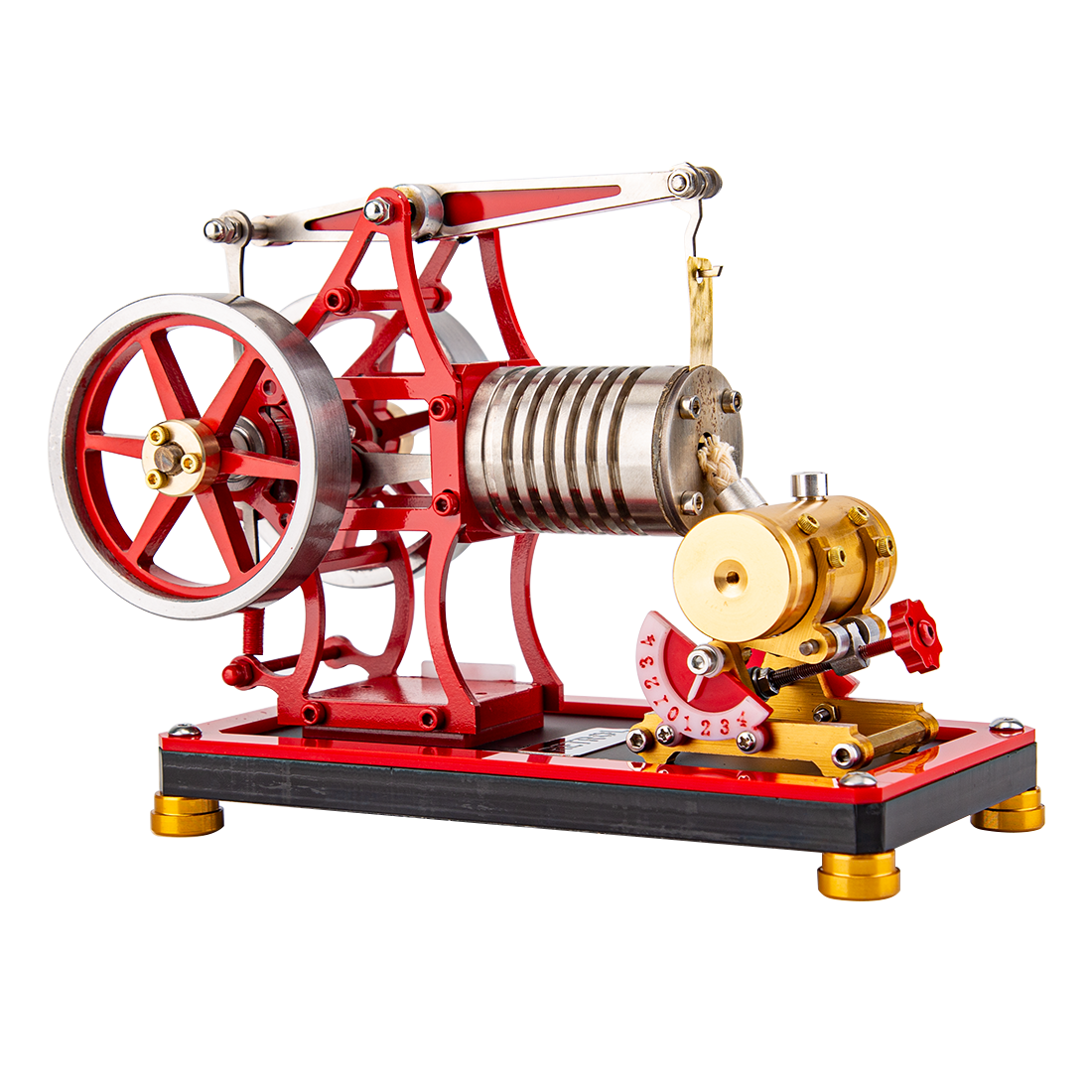
RETROL VE-01 Crossbeam Vacuum Engine Flame-Eater | EngineDIY
The Crossbeam Vacuum Engine Flame-Eater is a unique engine design that has been around for more than two centuries. Its simple yet ingenious design has fascinated engineers, hobbyists, and collectors alike. In this blog, we will explore the history, invention, playability, and technical aspects of this remarkable engine.
History
The Crossbeam Vacuum Engine Flame-Eater was invented in the early 19th century by Robert Stirling, a Scottish minister and inventor. Stirling was trying to create an efficient engine that could run on any heat source, and he came up with the idea of using a vacuum to power the engine. The vacuum would be created by heating and cooling the air in a sealed chamber, which would cause the air to expand and contract, driving a piston.

Stirling's original design used a single cylinder and a displacer to move the air back and forth between the hot and cold ends of the engine. However, other inventors soon realized that the engine could be made even more efficient by using multiple cylinders and crossbeams to transfer the heat between the hot and cold ends of the engine.
In the early 20th century, German inventor Robert Herrmann refined the design further by using a single cylinder and a clever arrangement of valves and ports to create a vacuum inside the engine. This design became known as the Crossbeam Vacuum Engine Flame-Eater, and it quickly became a favorite among hobbyists and collectors.
Invention and Creativity
The Crossbeam Vacuum Engine Flame-Eater is a true engineering marvel, with its intricate network of valves, ports, and crossbeams that work together to create a vacuum and power the engine. The design is deceptively simple, but it requires a deep understanding of thermodynamics, fluid mechanics, and mechanical engineering to create a working engine.
One of the most innovative aspects of the Crossbeam Vacuum Engine Flame-Eater is its use of multiple cylinders and crossbeams to transfer heat between the hot and cold ends of the engine. This design allows for greater efficiency and more power than Stirling's original design, while also making the engine more compact and easier to build.
Playability
The Crossbeam Vacuum Engine Flame-Eater is not just a marvel of engineering; it is also a fun and engaging toy for hobbyists and collectors. The engine can be powered by any heat source, from a simple tea light to a more complex alcohol burner, making it a versatile and entertaining toy.
Watching the engine in action is a delight, as the crossbeams and valves work together to create a vacuum and power the piston. The rhythmic movement of the engine is soothing and meditative, making it a great stress-reliever and conversation piece.
Professionalism
While the Crossbeam Vacuum Engine Flame-Eater is certainly a fun toy, it is also a serious piece of engineering. The design requires a deep understanding of thermodynamics, fluid mechanics, and mechanical engineering, as well as precision machining and assembly skills.
Many hobbyists and collectors take the engine seriously and strive to create the most efficient and powerful engine possible. They experiment with different fuels, heat sources, and materials to optimize the engine's performance and create a work of art that is both beautiful and functional.
Conclusion
The Crossbeam Vacuum Engine Flame-Eater is a true marvel of engineering, combining innovation, creativity, and playability in a single design. Its simple yet intricate design has fascinated generations of engineers, hobbyists, and collectors, and it remains a favorite among those who appreciate the beauty and power of the Stirling engine. Whether you are a serious engineer or a casual hobbyist, the Crossbeam Vacuum Engine Flame-Eater is a toy that is sure to delight and inspire.
From:






Leave a comment